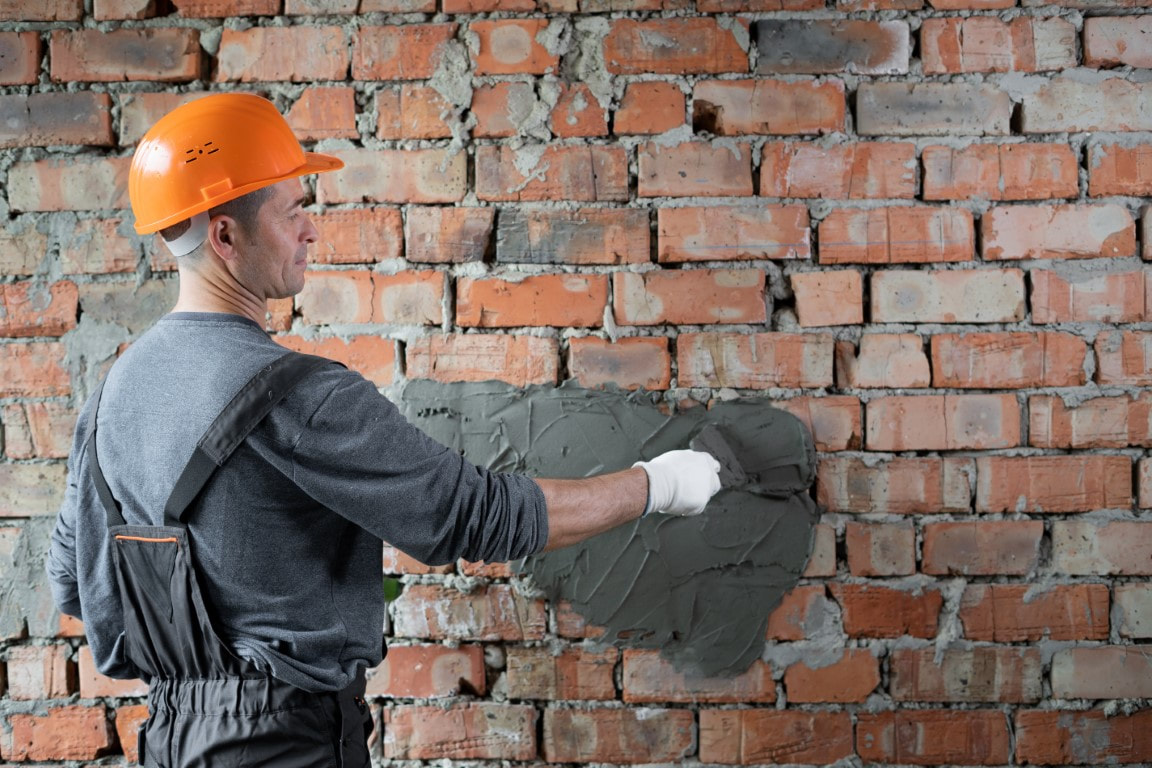Opening the Tricks of Sustainable Stonework Building And Construction Practices for Eco-Friendly Structures
Amongst the myriad techniques to environment-friendly building, lasting stonework construction stands out as a tried and true and durable approach that holds a wealth of untapped potential. From the choice of products to cutting-edge construction strategies, the secrets to attaining sustainability within masonry building and construction are complex and interesting.
Benefits of Sustainable Masonry Construction
Welcoming sustainable masonry building and construction techniques not just decreases environmental impact yet additionally provides long-term financial advantages to home builders and neighborhoods. By utilizing products like recycled blocks, obstructs, and rocks, contractors can substantially reduce the carbon footprint of their tasks while advertising source effectiveness. Additionally, sustainable stonework building and construction methods, such as proper insulation and thermal mass buildings, can boost energy performance within structures, resulting in reduced functional expenses in time.
Moreover, the durability and strength of masonry frameworks add to lasting economic advantages. Buildings created using lasting masonry techniques commonly require much less maintenance and repair service, translating to set you back financial savings for home builders and residential property owners. The longevity of masonry products also makes sure that frameworks remain steady and secure, reducing the demand for constant renovations or replacements.
Eco-Friendly Masonry Materials
Making use of eco-friendly stonework products is a pivotal step in the direction of boosting the sustainability of building and construction practices and reducing environmental effect while optimizing long-lasting economic advantages. Lasting masonry materials are sourced, produced, and made use of in a fashion that lowers general environmental impact. Lasting concrete obstructs integrate recycled aggregates and may include enhanced insulation buildings, adding to power efficiency in structures.
Moreover, natural materials like adobe, rammed planet, and straw bales provide superb thermal mass buildings, minimizing the need for heating and cooling energy. These products are commonly locally readily available, promoting local economies and lowering transportation-related carbon discharges. By picking environmentally friendly masonry products, building and construction projects can substantially decrease their environmental impact and add to the production of healthier, a lot more sustainable developed settings.
Energy-Efficient Masonry Methods
Power performance plays an important duty in boosting the sustainability of stonework construction methods. One essential energy-efficient masonry method is the use of thermal mass, which includes integrating dense materials like concrete or block right into the structure's framework to take in and keep warm.

Technologies in Lasting Stonework
Current advancements in lasting stonework methods have actually caused cutting-edge methods that are improving the building sector. One such development is the growth of self-healing concrete, which uses microorganisms installed within the concrete to recover splits autonomously. This development not only minimizes upkeep costs yet also improves the resilience of stonework frameworks, contributing to their sustainability.
One more notable advancement is making use of recycled aggregates in stonework construction - masonry contractor. By integrating products such as crushed ceramic waste or recycled glass into concrete blends, contractors can minimize the ecological influence of building and construction tasks while maintaining structural stability. This technique not just diverts waste from landfills but likewise saves all-natural sources, making it a key development in sustainable masonry building
Moreover, the assimilation of electronic layout devices, such as Structure Information Modeling (BIM), is transforming the way he has a good point masonry structures are prepared and built. BIM enables even more specific calculations, reduced material wastage, and enhanced energy effectiveness, eventually bring about more sustainable building techniques. These advancements jointly signify a promising future for sustainable masonry building and construction in the period of eco-friendly buildings.
Future Trends in Masonry Sustainability
With the ingenious strides made in sustainable masonry techniques, the future fads in stonework sustainability are poised to further revolutionize the building and construction sector. Among the crucial patterns shaping the future of masonry sustainability is the increased assimilation of modern technology. Improvements such as Structure Info Modeling (BIM) and online reality simulations are being used to optimize stonework building processes, leading to decreased material waste and boosted energy efficiency in structures.
Additionally, the development of unique sustainable products is set to play a significant role in improving the eco-friendliness of masonry building and construction. masonry contractor. Advancements like self-healing concrete, recycled accumulations, and bio-based binders are getting traction for their capacity to reduce ecological impact while more information keeping structural honesty

Final Thought
To conclude, sustainable stonework building and construction practices provide many advantages for green structures. By utilizing environmentally friendly materials and energy-efficient methods, stonework can add to a much more lasting developed atmosphere. Technologies in lasting masonry are continuously being developed to further improve the ecological performance of structures. Looking towards the future, the pattern of masonry sustainability is expected to grow, leading to more eco friendly and energy-efficient construction practices in the years to come.